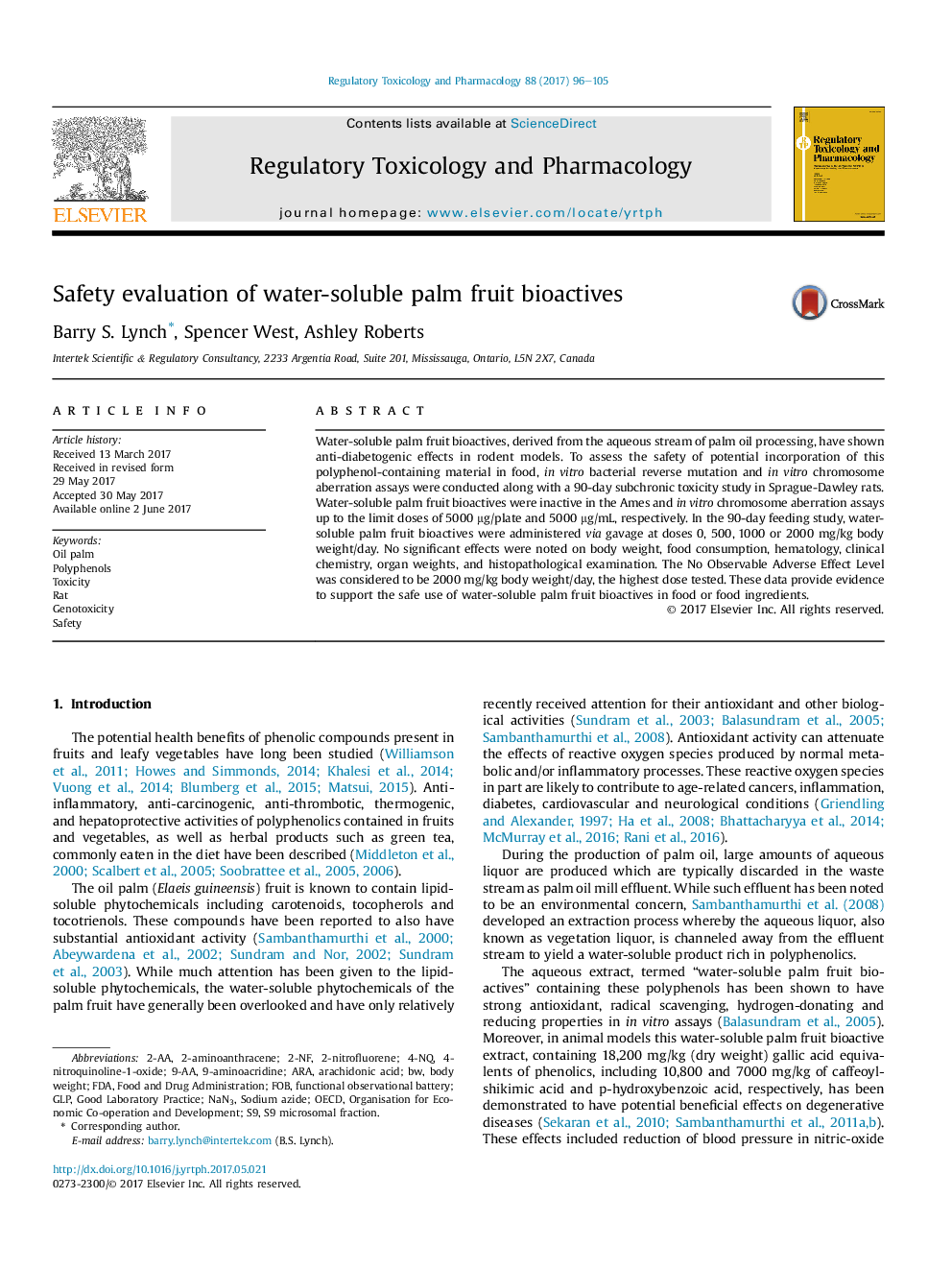| Article ID | Journal | Published Year | Pages | File Type |
|---|---|---|---|---|
| 5561148 | Regulatory Toxicology and Pharmacology | 2017 | 10 Pages |
â¢Safety of water soluble “palm fruit bioactives” was assessed.â¢In vitro and in vivo genotoxicity studies as well as repeat dose rat toxicity studies conducted.â¢No genotoxic activity in the Ames or in vitro chromosome aberration assays.â¢In the rat, the NOAEL after 90 days of treatment with palm fruit bioactives was 2000 mg/kg bw/day, the highest dose tested.
Water-soluble palm fruit bioactives, derived from the aqueous stream of palm oil processing, have shown anti-diabetogenic effects in rodent models. To assess the safety of potential incorporation of this polyphenol-containing material in food, in vitro bacterial reverse mutation and in vitro chromosome aberration assays were conducted along with a 90-day subchronic toxicity study in Sprague-Dawley rats. Water-soluble palm fruit bioactives were inactive in the Ames and in vitro chromosome aberration assays up to the limit doses of 5000 μg/plate and 5000 μg/mL, respectively. In the 90-day feeding study, water-soluble palm fruit bioactives were administered via gavage at doses 0, 500, 1000 or 2000 mg/kg body weight/day. No significant effects were noted on body weight, food consumption, hematology, clinical chemistry, organ weights, and histopathological examination. The No Observable Adverse Effect Level was considered to be 2000 mg/kg body weight/day, the highest dose tested. These data provide evidence to support the safe use of water-soluble palm fruit bioactives in food or food ingredients.
